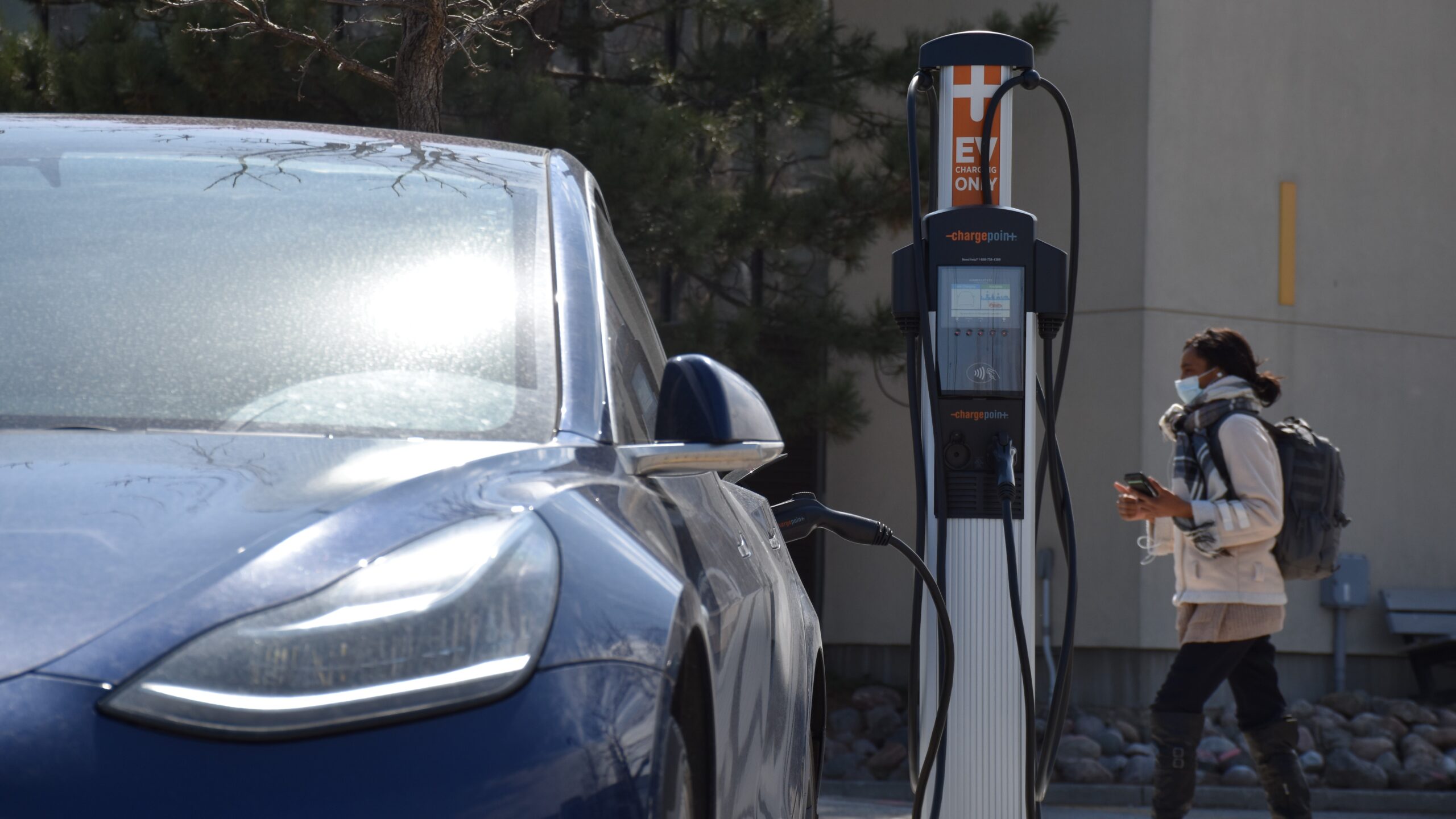Canada’s federal budget allotted more than $2 billion to bolster the switch to the zero-emission vehicles (ZEVs) industry by 2030, yet the investment might not be enough to bring the transition as swift as necessary.
“We are running against the clock, and the government’s support we get for electric and hybrid cars is not ambitious enough,” said Prof. Sumeet Gulati, UBC environmental and resource economics researcher.
Humber College has about 20 EV chargers around campus.
The federal 2030 emissions reduction planpromises to slash 25 per cent of Canada’s greenhouse gases by decarbonizing the passenger vehicle industry.
It’s a target the government expects to meet by making ZEVs more affordable through “bolder” objectives, including a ban on fuel car sales and manufacturing by 2035. It’s a target Gulati said is necessary but it’s unlikely Canada will meet it.
Hybrid and electric vehicles are often ignored as choices by Canadians, generally due to drivers’ concern over “how easy it might be for them to charge [their car] away from home,” he said.
Canada’s investment in car charging and alternative fuel infrastructure mounts to $450 million since 2016. In the most recent budget, the government promises to build 50,000 new charging spaces with up to $500 million for the next four years.
Suburban and Indigenous communities are expected to receive an additional $400 million credit from Natural Resources Canada for ZEV charging facilities.
“The federal investment in charging is simply not enough,” Gulati said. “We need millions of charging places to make driving greener, and the budget falls short on that too.”
The emission reduction plan also promises to bring more “clean cars” on the road through a $1.7 billion grant used to extend the zero-emission vehicles purchase incentives program “iZEV.”
“We are making it easier to buy an electric vehicle by expanding our rebate program,” said Prime Minister Justin Trudeau on Twitter.
Zero-emission vehicle buyers will get up to a $5,000 refund to offset the purchase until March 2025. More vehicle models will be included in the rebate’s eligibility as the government looks to “help Canadians get behind the wheel of a ZEV.”
Tim Burrows, a Canadian Electric Vehicle Society board member, said rebate incentives are key drivers in speeding up the transition into ZEVs.
“When Canadians can buy a gas version of that electric car for $10,000 less, having refund and credits makes zero-emission vehicles more accessible,” he said.
The selling price of zero-emission vehicles is one of the bumps most Canadians face when decarbonizing their commute, Burrows said. But to decrease the ZEVs’ retail price, more drivers need to purchase them.
“By buying more electric cars, companies will scale up their manufacturing and cut down their prices to stay competitive on the market,” he said.
Burrows said incentives would push more Canadians into buying ZEVs but will also in the long-term reduce their retail prices as more drivers get on board cleaner commutes.
The vehicle market is nevertheless changing on a global scale. GM and Honda announced earlier this month they will co-develop global production of what they describe as affordable EVs. They intend to produce millions of the EV vehicles by 2027.
Hydrogen is also being developed for vehicles and aircraft.
Subsidies were left out of the federal plan, leaving it up to provincial legislatures to budget for further tax credits and economic grants.
Ontario’s used EV and scrappage programs currently offer up to $3,000 credits to purchase some zero-emission vehicles. However, the incentive restricts the purchase of “out the dealer” cars and the recycling of a gas vehicle.
“All these incentives are great, but if we want the transition to happen now, Canadians need more,” Burrows said.
Gordon Lovegrove, a federal government internal science advisor for the transportation minister, agrees.
“Canadians need new incentives, not just an extension on the ones that already existed, especially now with the supply chain crunch,” he said.
The car industry continues to be impacted by the worldwide shortage of chips and metals used in building car batteries, raising the price of electric and hybrid-electric vehicles beyond most companies’ projections, Lovegrove said.
“Researchers like myself have been trying to come up with other zero-emission vehicles more affordable for Canadians, and hydrogen vehicles are the best option,” he said.
Fuel-cell cars have mostly been included in public transport fleets across Canada. The “game-changer commuting technology” slashes tailpipe emissions by only releasing water vapour into the atmosphere, Lovegrove said.
Hydrogen is still mostly obtained from fuel and gas. Yet, Lovegrove said Canada would shift to “green hydrogen” extraction over the next five years, reducing its cost to $2 per kilogram.
“A hydrogen car needs five to six kilograms per 600 kilometres, so they are also a money-saving opportunity for Canadians,” he said.
The federal emissions plan outlines hydrogen as a “key driver in enabling a successful transition to zero-emissions transportation.” But Lovegrove said without separate funding for hydrogen fuel cell manufacturing and research, the 2030 program misses one of the “most promising chances” to cut-down passenger vehicle emissions.
“If Canada wants to meet its targets, we need more hydrogen vehicles on the street,” he said. “Otherwise, Canada will fall short of its environmental promises once again.”

